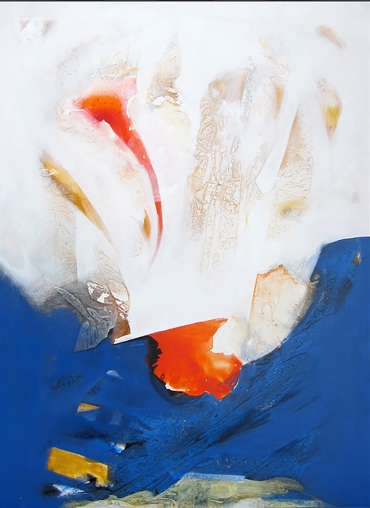How many times has it happened to you that you saw some abstract art paintings and wondered what is so special about abstract art? The common perception about abstract art is that an amateur or even a kid can paint like some famous abstract artists. Such paintings may seem easy to create, but in reality creating these paintings is very difficult and certainly, it is not everyone’s cup of tea.
If you will consider the history of art, you will come to know that regardless of the region or religion, in early ages a painting was supposed to represent something. Cameras were not invented at that time, so elite wanted some pieces that would show off their wealth. Hence, they would commission artists to create their portraits and even picturesque landscapes that they could hang in their homes. At that time, paintings were realistic. With the passage of time, huge developments were made with highly realistic linear perspectives, especially between the 14th and 17th centuries. This was the period of revival of arts and literature that became to be known as Renaissance. But as they say, “Change is the only constant thing”, trends in the art world kept on changing. It was in or around the year 1870 that France witnessed the rise of a league of artists who identified themselves as “The Impressionists”. Instead of copying the world as it is, this new genre of painters created paintings that depicted the impression of a scene. Initially, neither public nor art critics appreciated this new technique. It was only after some time that this form of paintings was accepted into the art circle.
Impressionists were followed by the Post-Impressionists, who preceded the Fauves of the early 20th century. Derived from the French word, Fauves stands for “Wild Beasts”. The work that Fauves created came to be known as Fauvism. In coherence with their name, they had wild brushwork and used vivid colors. Fauvism was followed another movement called Cubism, which was mastered by Picasso and Braque.
If you will observe art history carefully, you will find out that everything art movement was a reaction to its predecessor movement. The impressionist defied the age old tradition of creating paintings that represented the real world object. Their works bore an unfinished look. While Fauvists went against the flow and used unusual colors, Cubists went a step ahead and distorted everything. These artists showed the world that something as pivotal as color, line, form, and texture could be treated as subjects for a painting. And, this was the thought that brought the concept of abstract art.
The unique thing about famous abstract art paintings and sculptures is that they do not have a recognizable subject. Abstract artists do not try to imitate real world or create paintings that look like “something”; instead, they focus more on color and form. Hence, abstract art is non-representational.
Abstract art also gave rise to Abstract Expressionism, which surfaced after the war. Abstract Expressionism came to be known for its messiness and extreme applications of paint. These artists invented new, dramatic ways to apply paint in an experimental manner and explored inner turmoil, anxiety, and horrors of the war. Abstract Expressionism is divided into two categories, namely Action Painting and Color Field Painting.
Still wondering what abstract art painting actually is? To explain in layman language, the concept that painting has to look like something recognizable is obsolete. A painting can be made up of shapes, lines, colors and/or textures. Such paintings are called piece of abstract art.
Now that you know what abstract art is, the next question that rises is how can we understand and appreciate abstract art. Like any other form of painting, a good piece of work will hold a viewer’s attention and stimulate an emotional response. Abstraction allows you to be free. It allows you to express your personality. So, if a painting that you have bought makes you feel lively and a happy person, then probably you have already the art of understanding and appreciating the beauty of paintings. And, if that is not the case with you then keep looking on for such paintings, we are sure that you will find some paintings that will inspire you.

